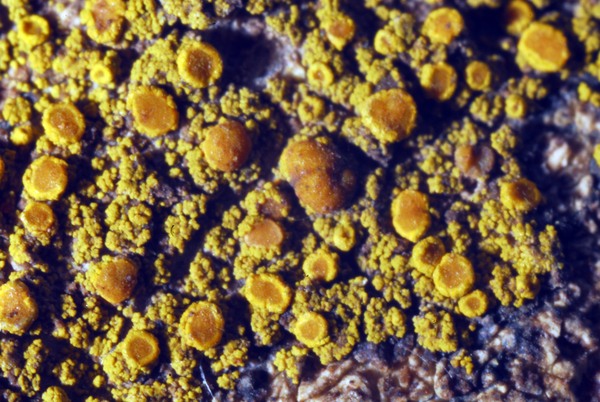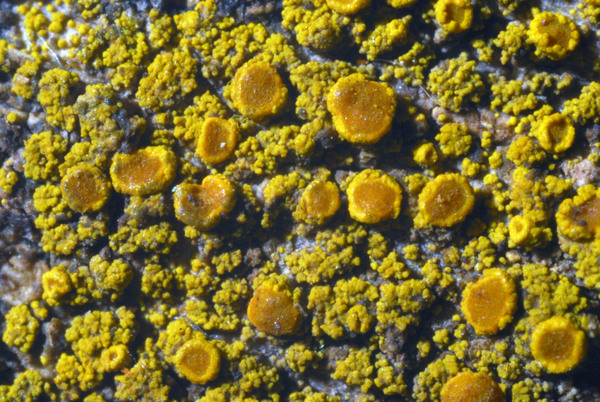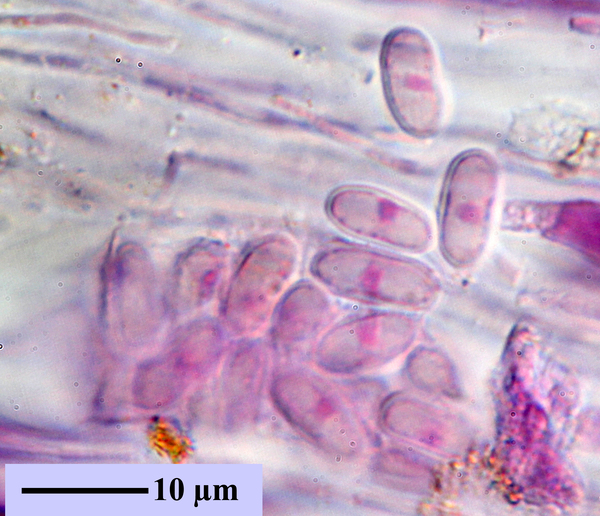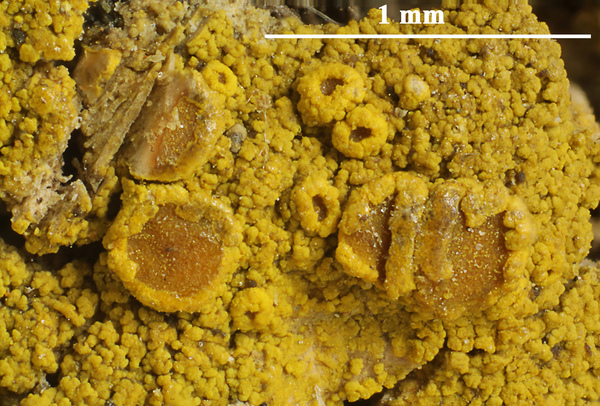Candelariella faginea Nimis, Poelt & Puntillo
Nova Hedwigia, 49: 276, 1989.
Synonyms:
Distribution: N - Piem (Isocrono & al. 2006, 2006), Emil (Fariselli & al. 2020). C - Tosc (Benesperi & al. 2007), Marc (Nimis & Tretiach 1999), Umb (Ravera & al. 2011), Laz (Ravera 2001, Massari & Ravera 2002, Fornasier & al. 2005, Ravera 2006), Abr (Nimis & Tretiach 1999, Corona & al. 2016, Gheza & al. 2021), Mol (Nimis & Tretiach 1999, Caporale & al. 2008, Genovesi & Ravera 2014), Sar (Zedda 1995, 2002). S - Camp (Aprile & al. 2003, 2003b, Brunialti & al. 2010, 2013, Garofalo & al. 2010, Ravera & Brunialti 2013), Bas (Nimis & Tretiach 1999, Potenza 2006), Cal (Puntillo 1996, Aragón & Martínez 2002), Si (Campisi & al. 2020).
Description: Thallus crustose, episubstratic, bright yellow, consisting of scattered to usually contiguous, 0.05-0.1 mm wide, flat to slightly convex, subsquamulose areoles which burst into granular blastidia, forming orbicular patches to 1(-2) cm in diam., which often coalesce to cover much larger surfaces. Apothecia frequent, lecanorine to finally biatorine, scattered to contiguous, constricted at base, with an initially flat, brownish yellow disc, and a thick and prominent, often granulose-blastidiate, bright yellow thalline margin, later often with a convex disc and immarginate. Thalline exciple corticate, paraplectenchymatous, filled with algae; proper exciple wider in upper part, more evident in old apothecia; epithecium yellow, granulose; hymenium colourless, 70-95 μm high; paraphyses 1.5-2 μm thick, the apical cells not or only slightly swollen; hypothecium colourless. Asci 8-12-24-32 spored in the same apothecium, clavate, with an apical dome which is I+ blue only in the internal, lower part, interrupted in the centre by an I+ paler blue strip, Candelaria-type. Ascospores 1-celled, hyaline, straight or slightly curved, with rounded ends, often biguttulate, 12.5-15 x 3.5-5 μm, more or less of the same size in all asci, irrespectively of their number. Photobiont chlorococcoid. Spot tests: thallus K- or K+ faintly orange, C-, KC-, P-. Chemistry: calycin, pulvinic acid, pulvinic dilactone.Note: A species with a thallus composed of minute roundish squamules, later forming granulose blastidia, and asci with a variable number (8 to 32) of ascospores, found on bark of deciduous trees (e.g. of Fagus) in more or less closed forests; widespread but not common in forests of the montane belt in Mediterranean orobiomes; most frequent in beech forests of Central and Southern Italy.
Growth form: Crustose
Substrata: bark
Photobiont: green algae other than Trentepohlia
Reproductive strategy: mainly sexual
Commonnes-rarity: (info)
Alpine belt: absent
Subalpine belt: absent
Oromediterranean belt: absent
Montane belt: rare
Submediterranean belt: absent
Padanian area: absent
Humid submediterranean belt: absent
Humid mediterranean belt: absent
Dry mediterranean belt: absent
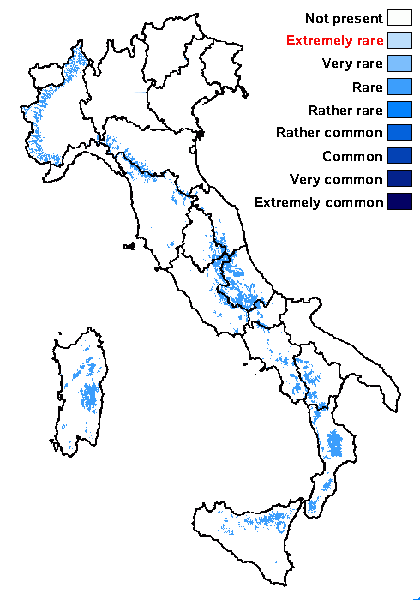
Predictive model
Herbarium samples
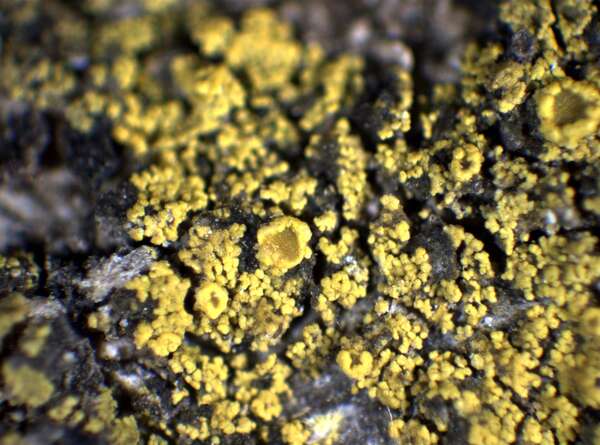

P.L. Nimis; Owner: Department of Life Sciences, University of Trieste
Herbarium: TSB (13756)
2001/11/19
isotypus
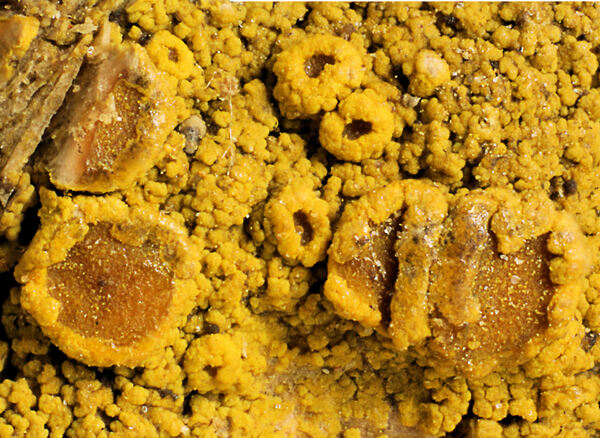

Felix Schumm CC BY-SA 4.0
[TSB 13756], Italia, Calabria, Prov. Cosenza, M. Pollino, loc. Serra del Prete, 1680 m, on Fagus.
Leg. P.L. Nimis & J. Poelt, 10.07.1988. VEZDA: LICHENES SELECTI EXSICCATI NR. 2377
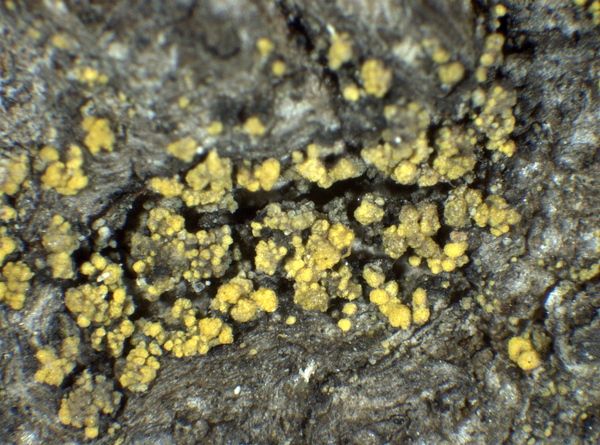

P.L.Nimis; Owner: Department of Life Sciences, University of Trieste
Herbarium: TSB (36981)
2008.02.25
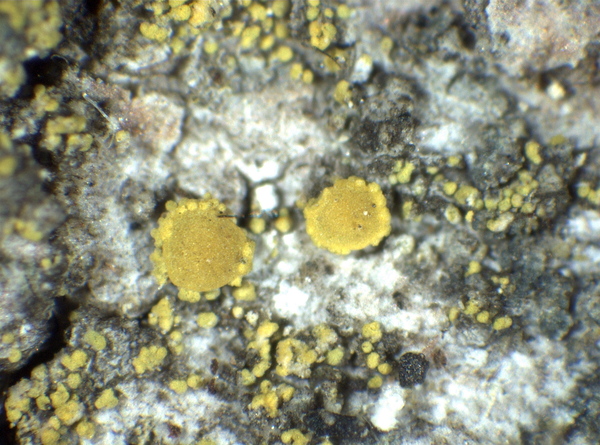

P.L.Nimis; Owner: Department of Life Sciences, University of Trieste
Herbarium: TSB (36981)
2008.02.25
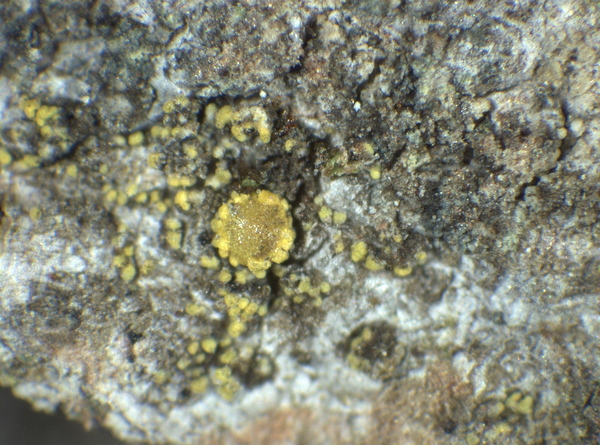

P.L.Nimis; Owner: Department of Life Sciences, University of Trieste
Herbarium: TSB (36981)
2008.02.25
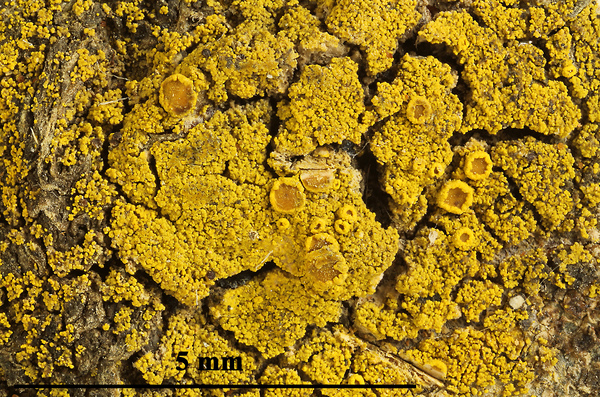

Felix Schumm; Owner: CC BY-SA 4.0
[TSB 13756], Italia, Calabria, Prov. Cosenza, M. Pollino, loc. Serra del Prete, 1680 m, on Fagus. – Leg. P.L. Nimis & J. Poelt, 10.07.1988. VEZDA: LICHENES SELECTI EXSICCATI NR. 2377
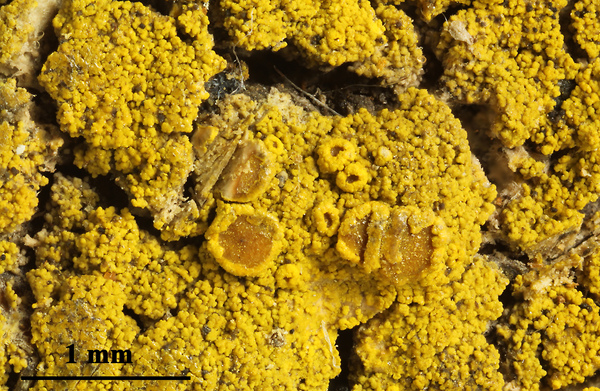

Felix Schumm; Owner: CC BY-SA 4.0
[TSB 13756], Italia, Calabria, Prov. Cosenza, M. Pollino, loc. Serra del Prete, 1680 m, on Fagus. – Leg. P.L. Nimis & J. Poelt, 10.07.1988. VEZDA: LICHENES SELECTI EXSICCATI NR. 2377
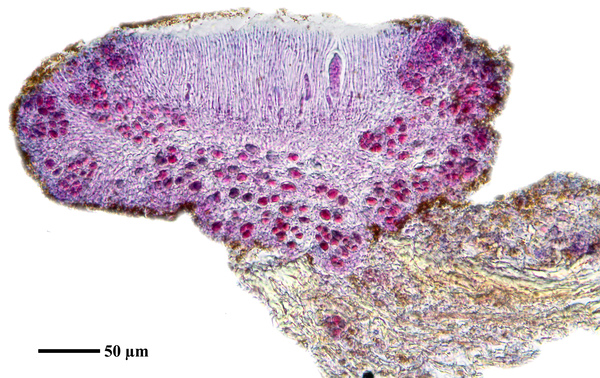

Felix Schumm - CC BY-SA 4.0
[TSB 13756], Italia, Calabria, Prov. Cosenza, M. Pollino, loc. Serra del Prete, 1680 m, on Fagus. – Leg. P.L. Nimis & J. Poelt, 10.07.1988. V ZDA: LICHENES SELECTI EXSICCATI NR. 2377.
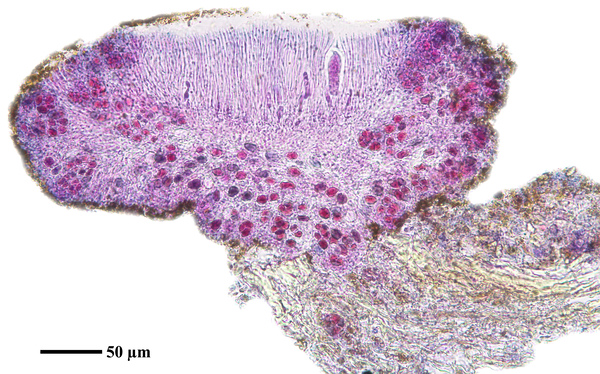

Felix Schumm - CC BY-SA 4.0
[TSB 13756], Italia, Calabria, Prov. Cosenza, M. Pollino, loc. Serra del Prete, 1680 m, on Fagus. – Leg. P.L. Nimis & J. Poelt, 10.07.1988. V ZDA: LICHENES SELECTI EXSICCATI NR. 2377.
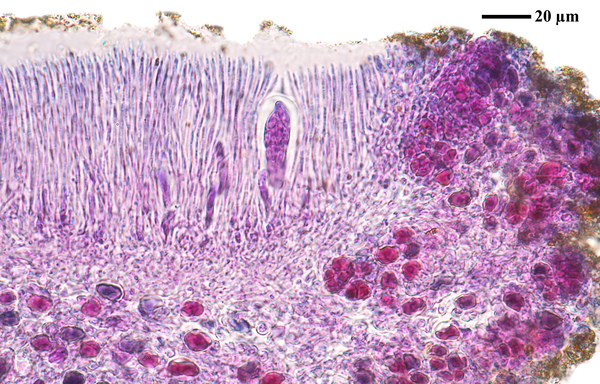

Felix Schumm - CC BY-SA 4.0
[TSB 13756], Italia, Calabria, Prov. Cosenza, M. Pollino, loc. Serra del Prete, 1680 m, on Fagus. – Leg. P.L. Nimis & J. Poelt, 10.07.1988. V ZDA: LICHENES SELECTI EXSICCATI NR. 2377.
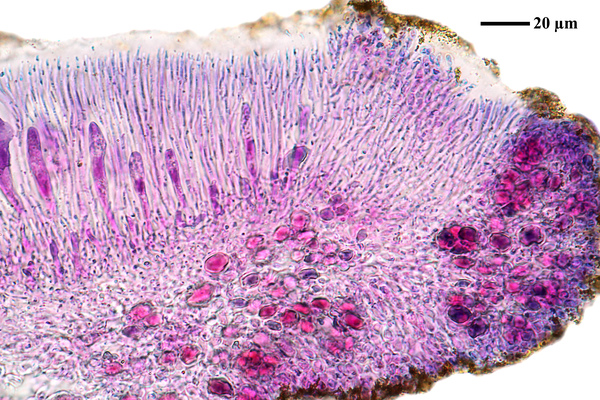

Felix Schumm - CC BY-SA 4.0
[TSB 13756], Italia, Calabria, Prov. Cosenza, M. Pollino, loc. Serra del Prete, 1680 m, on Fagus. – Leg. P.L. Nimis & J. Poelt, 10.07.1988. V ZDA: LICHENES SELECTI EXSICCATI NR. 2377.
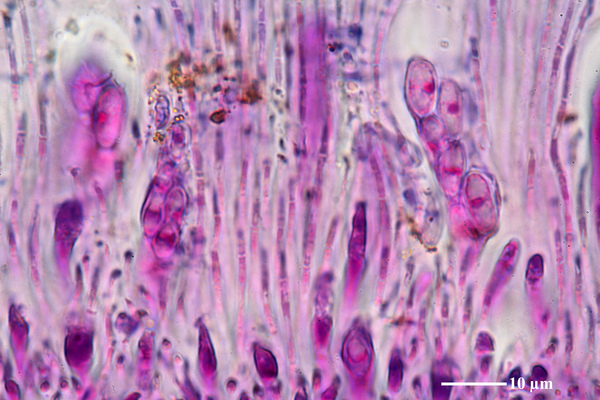

Felix Schumm - CC BY-SA 4.0
[TSB 13756], Italia, Calabria, Prov. Cosenza, M. Pollino, loc. Serra del Prete, 1680 m, on Fagus. – Leg. P.L. Nimis & J. Poelt, 10.07.1988. V ZDA: LICHENES SELECTI EXSICCATI NR. 2377.
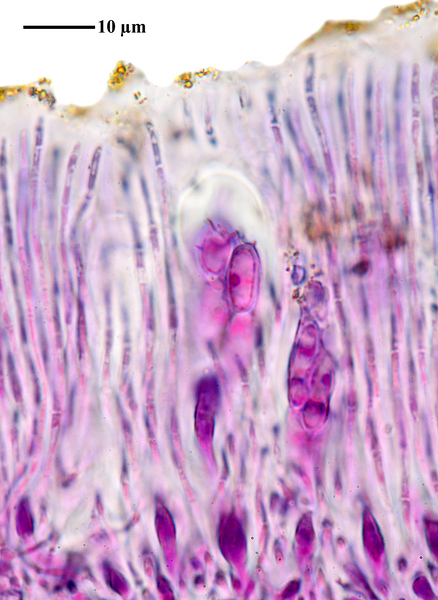

Felix Schumm - CC BY-SA 4.0
[TSB 13756], Italia, Calabria, Prov. Cosenza, M. Pollino, loc. Serra del Prete, 1680 m, on Fagus. – Leg. P.L. Nimis & J. Poelt, 10.07.1988. V ZDA: LICHENES SELECTI EXSICCATI NR. 2377.
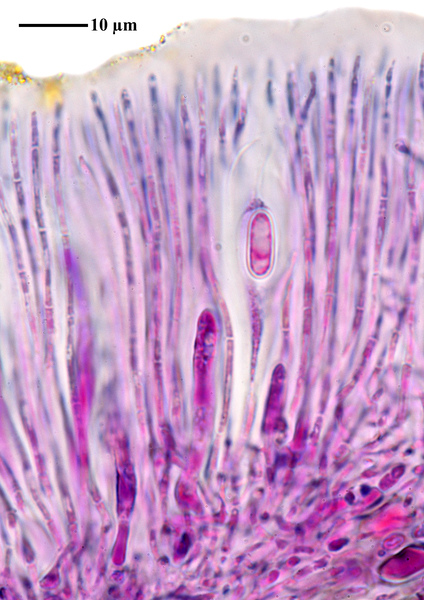

Felix Schumm - CC BY-SA 4.0
[TSB 13756], Italia, Calabria, Prov. Cosenza, M. Pollino, loc. Serra del Prete, 1680 m, on Fagus. – Leg. P.L. Nimis & J. Poelt, 10.07.1988. V ZDA: LICHENES SELECTI EXSICCATI NR. 2377.
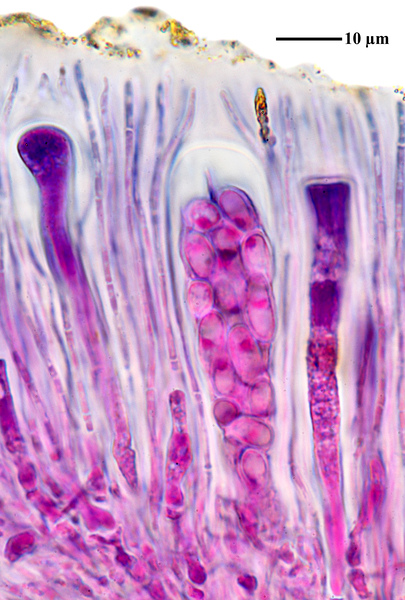

Felix Schumm - CC BY-SA 4.0
[TSB 13756], Italia, Calabria, Prov. Cosenza, M. Pollino, loc. Serra del Prete, 1680 m, on Fagus. – Leg. P.L. Nimis & J. Poelt, 10.07.1988. V ZDA: LICHENES SELECTI EXSICCATI NR. 2377.
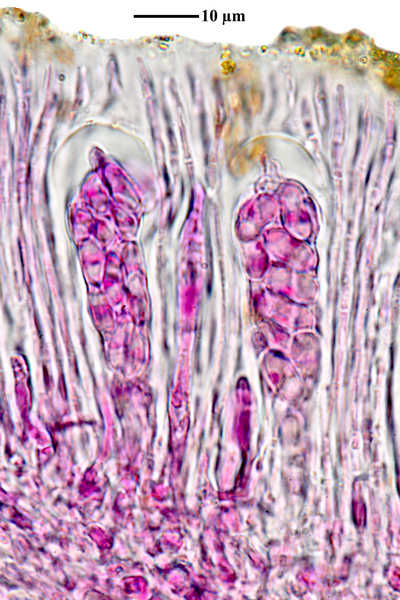

Felix Schumm - CC BY-SA 4.0
[TSB 13756], Italia, Calabria, Prov. Cosenza, M. Pollino, loc. Serra del Prete, 1680 m, on Fagus. – Leg. P.L. Nimis & J. Poelt, 10.07.1988. V ZDA: LICHENES SELECTI EXSICCATI NR. 2377.
Growth form: Crustose
Substrata: bark
Photobiont: green algae other than Trentepohlia
Reproductive strategy: mainly sexual
Commonnes-rarity: (info)
Alpine belt: absent
Subalpine belt: absent
Oromediterranean belt: absent
Montane belt: rare
Submediterranean belt: absent
Padanian area: absent
Humid submediterranean belt: absent
Humid mediterranean belt: absent
Dry mediterranean belt: absent

Predictive model
| Herbarium samples |


P.L. Nimis; Owner: Department of Life Sciences, University of Trieste
Herbarium: TSB (13756)
2001/11/19
isotypus


Felix Schumm CC BY-SA 4.0
[TSB 13756], Italia, Calabria, Prov. Cosenza, M. Pollino, loc. Serra del Prete, 1680 m, on Fagus.
Leg. P.L. Nimis & J. Poelt, 10.07.1988. VEZDA: LICHENES SELECTI EXSICCATI NR. 2377


P.L.Nimis; Owner: Department of Life Sciences, University of Trieste
Herbarium: TSB (36981)
2008.02.25


P.L.Nimis; Owner: Department of Life Sciences, University of Trieste
Herbarium: TSB (36981)
2008.02.25


P.L.Nimis; Owner: Department of Life Sciences, University of Trieste
Herbarium: TSB (36981)
2008.02.25


Felix Schumm; Owner: CC BY-SA 4.0
[TSB 13756], Italia, Calabria, Prov. Cosenza, M. Pollino, loc. Serra del Prete, 1680 m, on Fagus. – Leg. P.L. Nimis & J. Poelt, 10.07.1988. VEZDA: LICHENES SELECTI EXSICCATI NR. 2377


Felix Schumm; Owner: CC BY-SA 4.0
[TSB 13756], Italia, Calabria, Prov. Cosenza, M. Pollino, loc. Serra del Prete, 1680 m, on Fagus. – Leg. P.L. Nimis & J. Poelt, 10.07.1988. VEZDA: LICHENES SELECTI EXSICCATI NR. 2377


Felix Schumm - CC BY-SA 4.0
[TSB 13756], Italia, Calabria, Prov. Cosenza, M. Pollino, loc. Serra del Prete, 1680 m, on Fagus. – Leg. P.L. Nimis & J. Poelt, 10.07.1988. V ZDA: LICHENES SELECTI EXSICCATI NR. 2377.


Felix Schumm - CC BY-SA 4.0
[TSB 13756], Italia, Calabria, Prov. Cosenza, M. Pollino, loc. Serra del Prete, 1680 m, on Fagus. – Leg. P.L. Nimis & J. Poelt, 10.07.1988. V ZDA: LICHENES SELECTI EXSICCATI NR. 2377.


Felix Schumm - CC BY-SA 4.0
[TSB 13756], Italia, Calabria, Prov. Cosenza, M. Pollino, loc. Serra del Prete, 1680 m, on Fagus. – Leg. P.L. Nimis & J. Poelt, 10.07.1988. V ZDA: LICHENES SELECTI EXSICCATI NR. 2377.


Felix Schumm - CC BY-SA 4.0
[TSB 13756], Italia, Calabria, Prov. Cosenza, M. Pollino, loc. Serra del Prete, 1680 m, on Fagus. – Leg. P.L. Nimis & J. Poelt, 10.07.1988. V ZDA: LICHENES SELECTI EXSICCATI NR. 2377.


Felix Schumm - CC BY-SA 4.0
[TSB 13756], Italia, Calabria, Prov. Cosenza, M. Pollino, loc. Serra del Prete, 1680 m, on Fagus. – Leg. P.L. Nimis & J. Poelt, 10.07.1988. V ZDA: LICHENES SELECTI EXSICCATI NR. 2377.


Felix Schumm - CC BY-SA 4.0
[TSB 13756], Italia, Calabria, Prov. Cosenza, M. Pollino, loc. Serra del Prete, 1680 m, on Fagus. – Leg. P.L. Nimis & J. Poelt, 10.07.1988. V ZDA: LICHENES SELECTI EXSICCATI NR. 2377.


Felix Schumm - CC BY-SA 4.0
[TSB 13756], Italia, Calabria, Prov. Cosenza, M. Pollino, loc. Serra del Prete, 1680 m, on Fagus. – Leg. P.L. Nimis & J. Poelt, 10.07.1988. V ZDA: LICHENES SELECTI EXSICCATI NR. 2377.


Felix Schumm - CC BY-SA 4.0
[TSB 13756], Italia, Calabria, Prov. Cosenza, M. Pollino, loc. Serra del Prete, 1680 m, on Fagus. – Leg. P.L. Nimis & J. Poelt, 10.07.1988. V ZDA: LICHENES SELECTI EXSICCATI NR. 2377.


 INDEX FUNGORUM
INDEX FUNGORUM
 GBIF
GBIF
